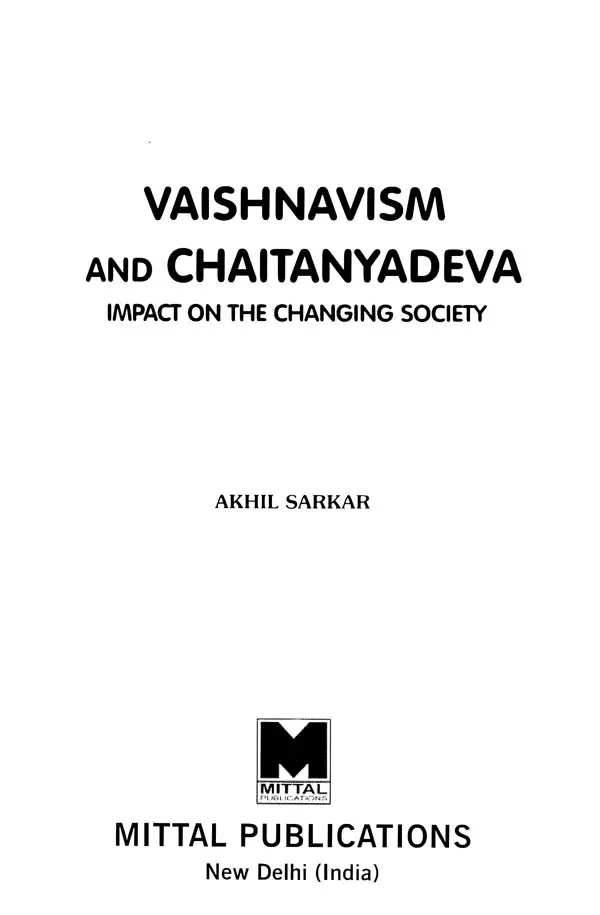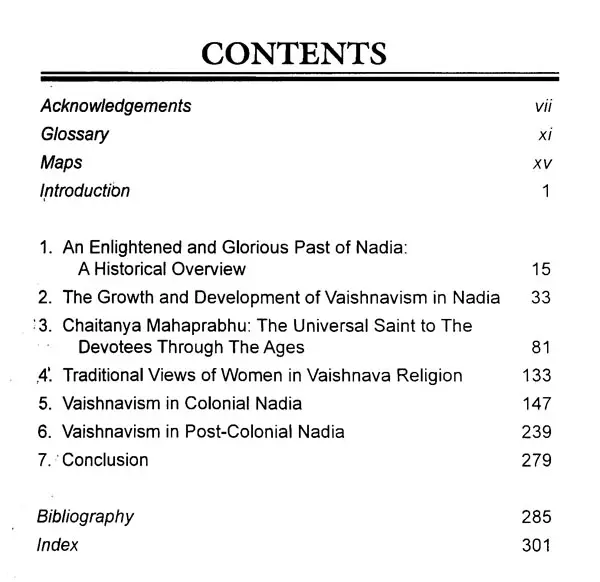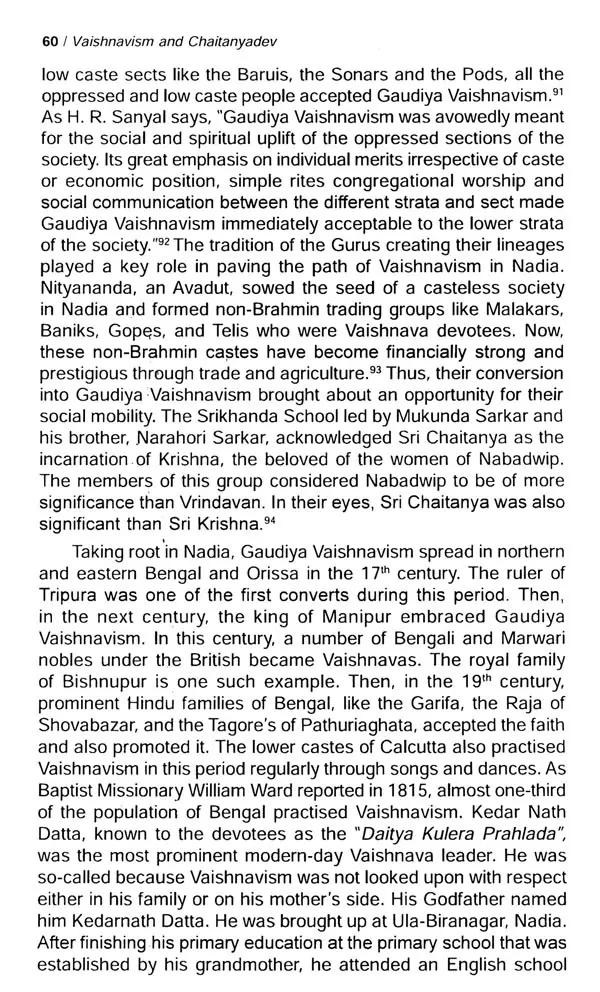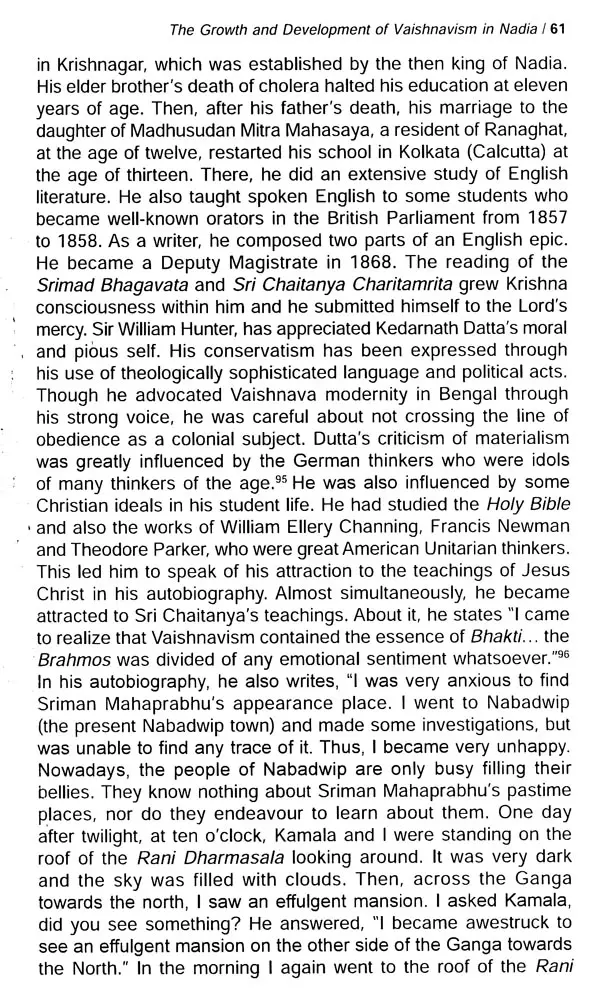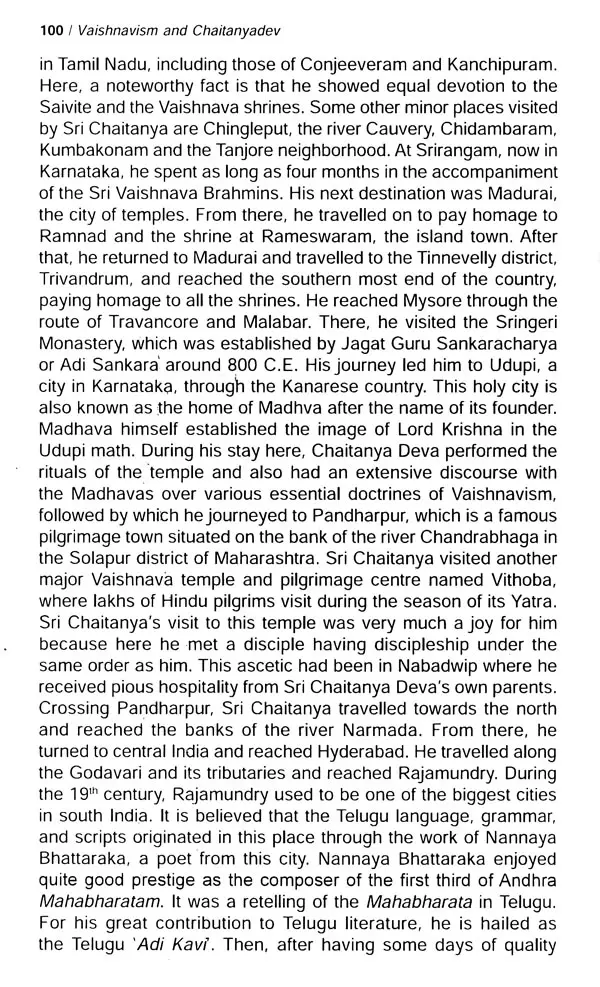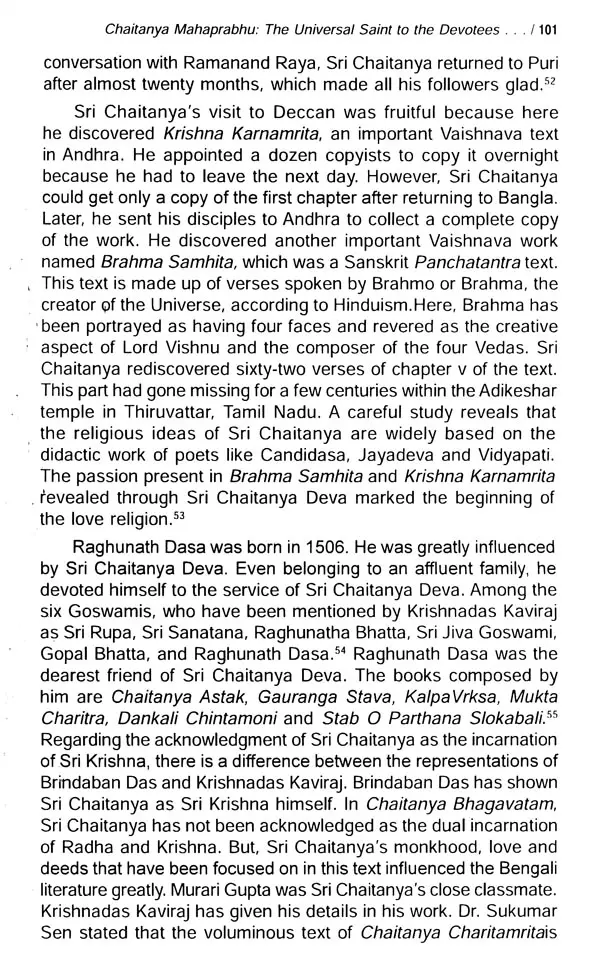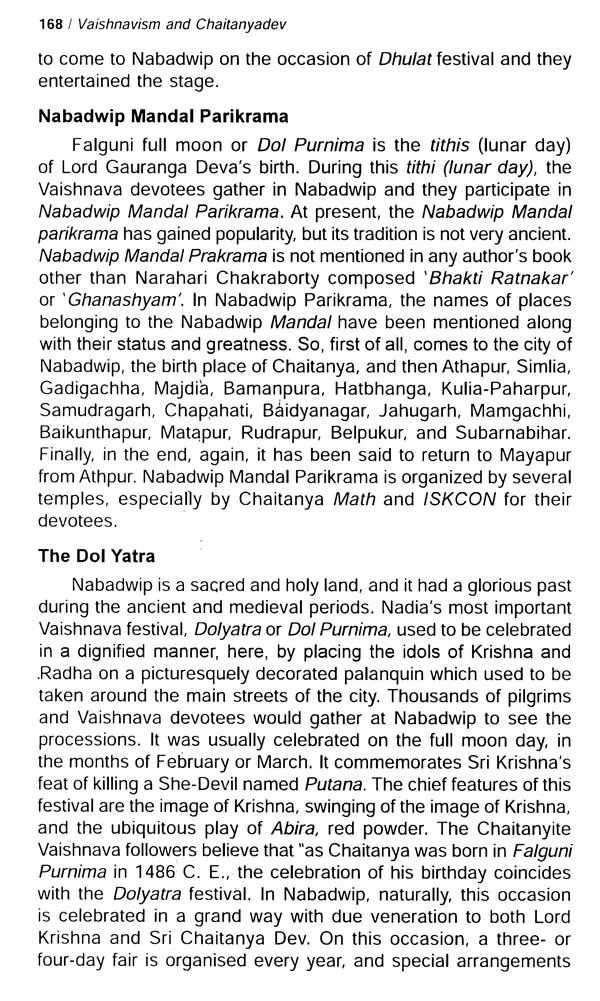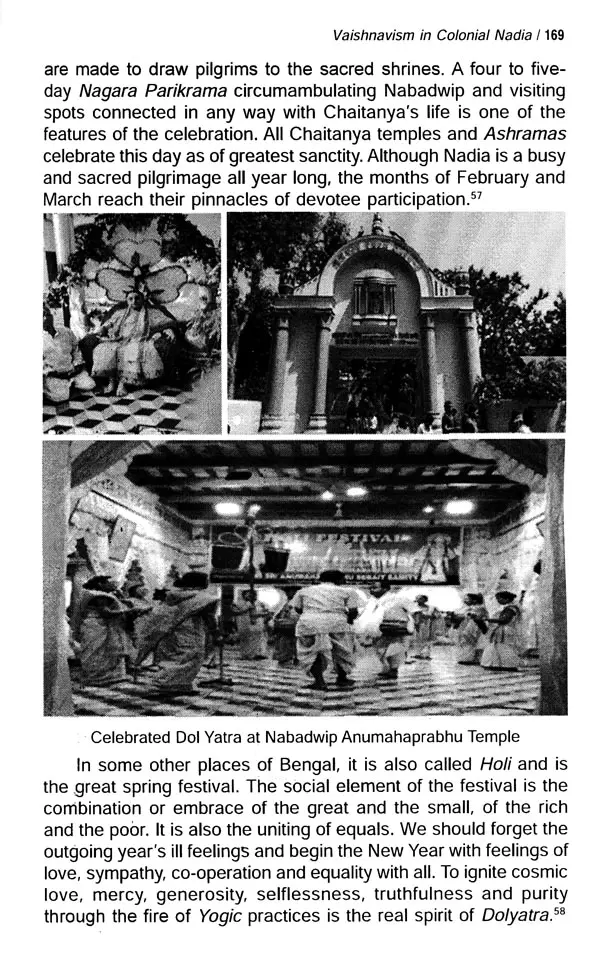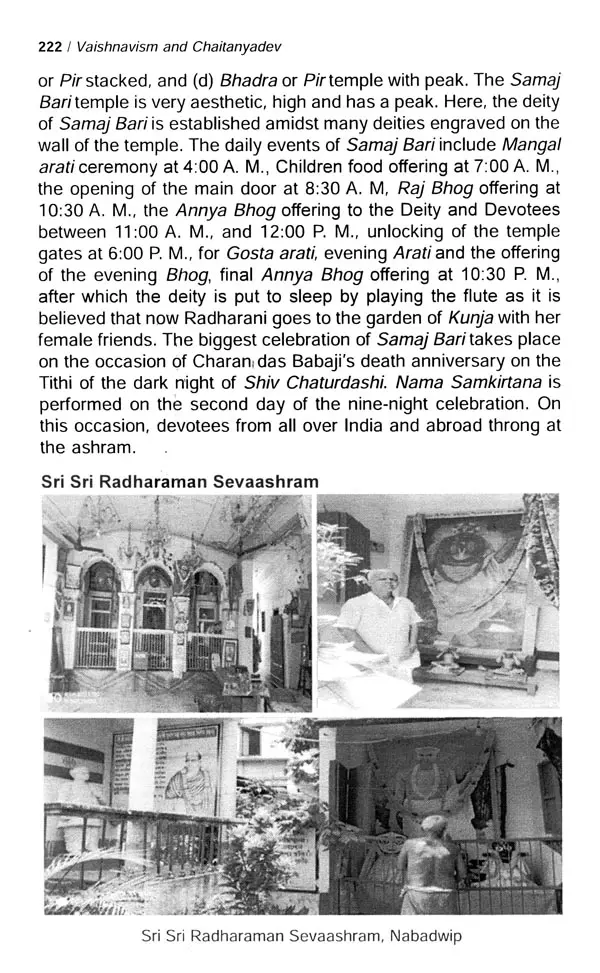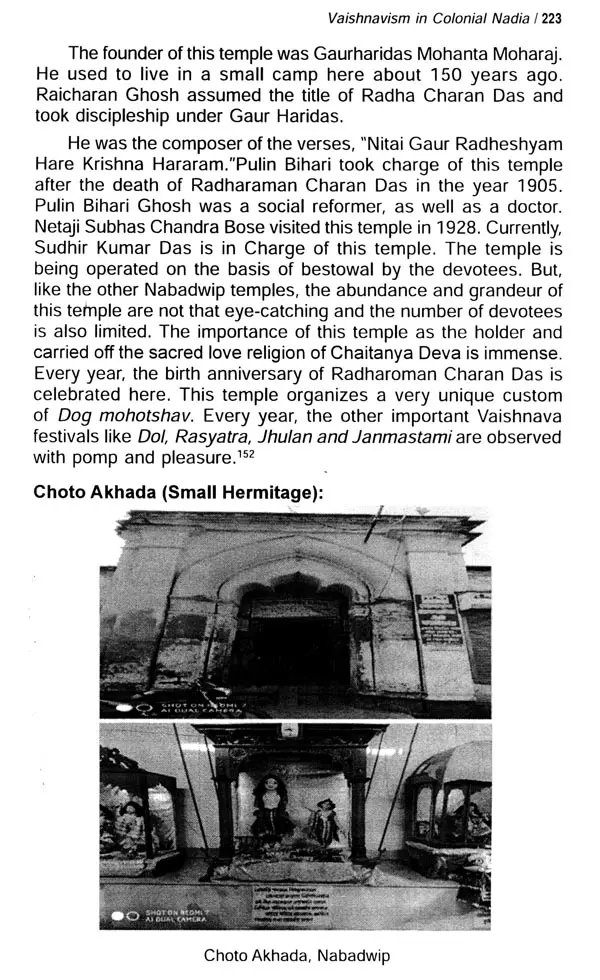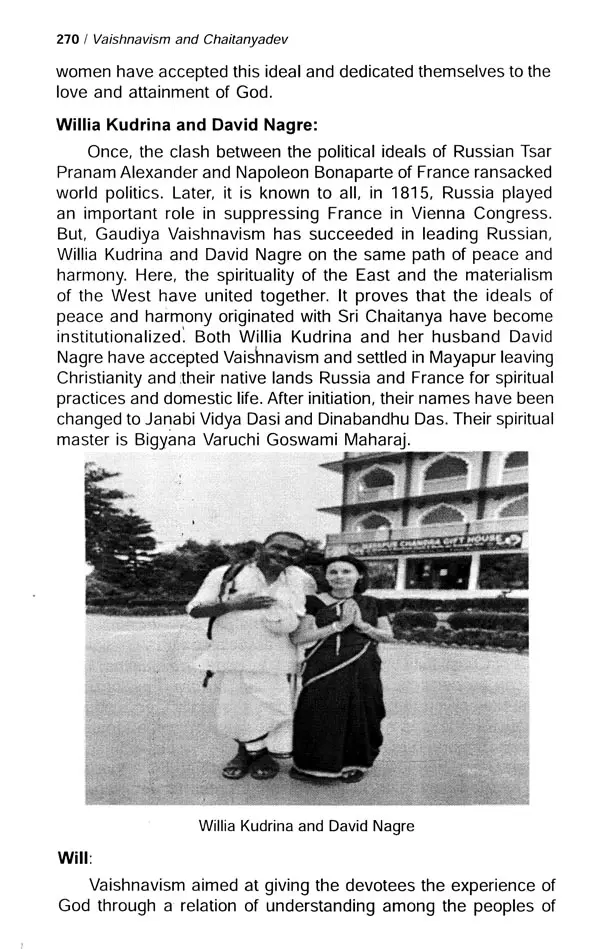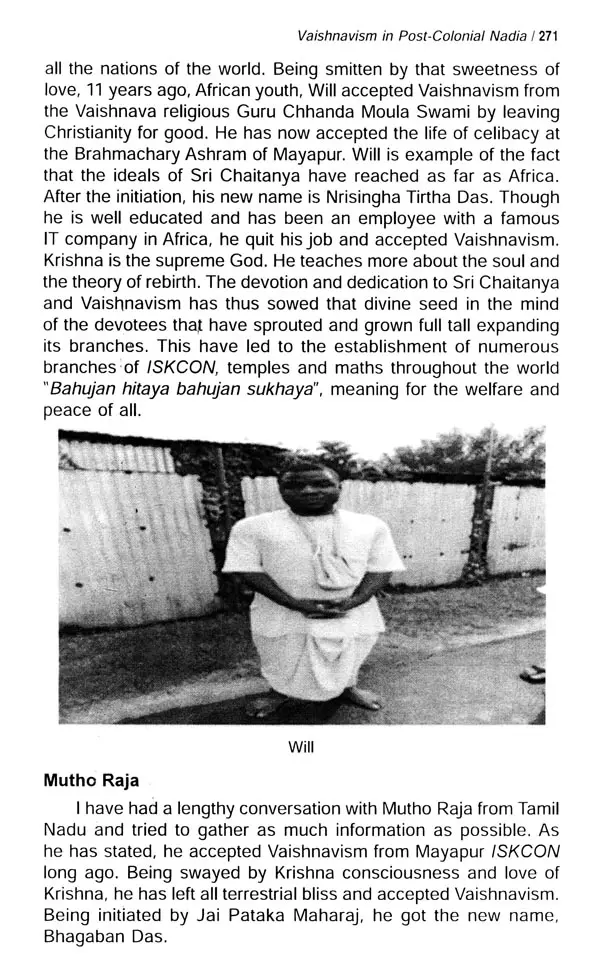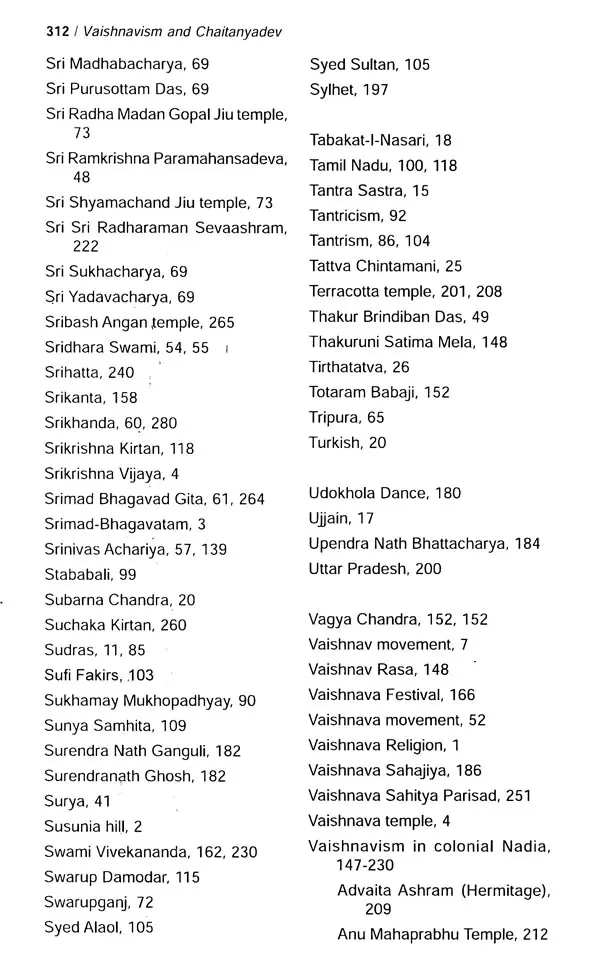
Vaishnavism and Chaitanyadeva- Impact of the Changing Society
Book Specification
| Item Code: | UAF221 |
| Author: | Akhil Sarkar |
| Publisher: | Mittal Publications, New Delhi |
| Language: | English |
| Edition: | 2022 |
| ISBN: | 9789390692712 |
| Pages: | 328 (Throughout Color Illustrations) |
| Cover: | HARDCOVER |
| Other Details | 9.00 X 6.00 inch |
| Weight | 550 gm |
Book Description
As it accommodates worldwide modernity and technological advancement, Gaudiya Vaishnavism has drifted from Chaitanyadevas principles due to several arguments about Mayapur. In some circumstances Chaitanyadevas individuality has been overlooked, and Gaudiya Vaishnavism has become an international religion. To remedy this attempt has been made in this book to investigate Vaisnavism contribution to the regeneration of the economy, society and spirituality in its birthplace, particularly Nabadwala and its adjacent territories.
This world originated from Vishnu and is located in it. Vishnu is the master of the status and control of this world and he is the universe." That is, the Vaishnava religion originated by adopting the names of Vishnu, Narayana, Basudev Bhagavat, Krishna, etc. At present, the Supreme Court has verdict that Hinduism is not a religion, but a way of life.' John Dowson writes about the nature of Vishnu "Vishnu, Root, Vish, 'to pervade'. The second god of the Hindu triad. In Rig-Veda, Vishnu is not in the first rank of gods. He is a manifestation of solar energy and is described as striding through the seventh region of the universe in three steps and enveloping all things in the dust (of his beams). These three steps are explained by commentators as denoting the three manifestations of light-fire, lightning, and the Sun; or the three places of the Sun-it’s rising, culminations and setting. In the Veda, he is occasionally associated with Indra. He has very little in common with the Vishnu of later times, but he is called "the uncountable preserver" According to Dr. Abinash Chandra Das, Vishnu occupied a superposition in later Vedic literature, holding a subordinate position in the Rigveda's pantheon of gods. He took three steps, one on earth, one in mid-heaven, and the third in the highest heaven, which was invisible to men, but visible to gods like an eye fixed in heaven.
The love religion is established on the Bhagavad Gita.
However, pinpointing when this religion began, expanded, or was transmitted is challenging. Archaeological evidence has been found that illustrates how Vaishnavism emerged in Bengal. The Gupta rock inscriptions are modest and elegant, consisting of lines carved into the north wall of the hill. The engraved lines appear below and beside the depiction of a wheel (chakra) surrounded by fire. It's also known as the Surya chakra or the Vishnu chakra (Vishnu's wheel). This inscription was written in Sanskrit during the fourth century, and the characters are of the eastern form of the Gupta Brahmi. Chandravarman and his father, Sinhaverman, appear to have held their seat of power in Pushkaran, which is widely identified with the village of Pakhanna, which is closest to the Susunia hill." In addition, the Dhanaidaha copperplate was ·discovered in Rajshahi district, as was the Damodarpur copperplate in Dinajpur district, the Mallasharul copperplate. in Burdwan district, the Khalimpur Script in Maida District, the Deopara script in Rajshahi district, and the Belava script in Narayanganj district, etc... Many ancient idols of various incarnations of Vishnu have been discovered and are constantly being discovered in various places of Bengal. Based on all of this archaeological evidence, it can also be stated that the Bhagavata religion, also known as Vaishnavism, represented the majority of Hinduism in Bengal from the Gupta period through. As a result, the unwavering popularity of Vaishnavism during the reign of the Gupta monarchs testifies to the flourishing of Vaishnavism alongside Buddhism. As indicated by the works of Joydev, the author of the Gitagovinda, this is most likely the reason for the fusion of Buddhism and Vaishnavism in Bengal. Where Gautama Buddha recognized as Vishnu's ninth incarnation. Sri Krishna Basudev is the form of Vishnu that a considerable number of ardent Hindus across India have accepted because Krishna has excelled. Lord Krishna's two personalities are mostly established in Purana poetry. On the one hand, he is a brilliant politician, diplomat, and attractive public figure. Parthasarathy (The Charioteer) Krishna is the Mahabharata main driving force, the architect of the Dharma realm and the proponent of the Gita.
Book's Contents and Sample Pages
